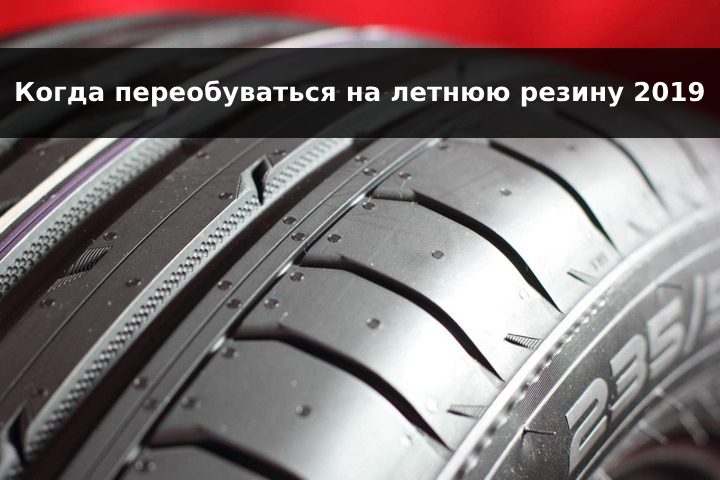
When to change your car for summer tires 2019
Content
At an ambient temperature of + 10C ° and more. It is from this threshold that the conditions suitable for the normal functioning of summer tires begin. Timeliness of "changing shoes" is a rather urgent moment, because they are more economical in comparison with winter ones, since they are more economical. weigh less and wear worse. When driving on winter tires in summer, both excessive fuel consumption and reduced braking properties are observed. So the point is not just frugality: winter tires become too pliable, which affects the quality of management.
What happens if you use tires out of season
"Shipovka" requires special attention, because in this case, the braking distance is extended, there is a rapid loss of studs, which is accompanied by a loss of useful properties and an increase in accidents. In general, driving in warm weather with thorns is barbaric. And, conversely, when the temperature drops below + 5C °, summer tires begin to harden quickly, the coefficient of friction between it and the road surface deteriorates, which is fraught with drifts up to a complete loss of control.
You may also be interested in summer tire rating 2019
Clause 5.5 of the technical regulations of the Customs Union "On the safety of wheeled vehicles" 018/2011 states that the operation of a vehicle with studded tires in the summer months is strictly prohibited. In turn, it is forbidden to drive without winter tires during the calendar winter. Moreover, winter tires are mounted on all wheels of the vehicle at the same time. Among other things, it follows from the technical regulations that cars equipped with studless winter tires, in accordance with the law, are allowed to operate all year round.

Thus, owners of studded tires should nominally change winter tires to summer tires at the beginning of summer. Frankly speaking, this is not a very convenient rule, but there is a small caveat that local governments are allowed to adjust the terms upwards. In principle, in the south, regional authorities have the right to prohibit the use of winter tires, say, from March to November; or in the north, they may be ordered to operate it from September to May. Although they are not authorized to limit the direct norm, i.e. the seasonal period of the ban in the zone of the union: from December to February inclusive, cars here must be operated only in winter tires, and from June to August - only in summer tires.
Guided by weather and climate conditions, experience and common sense
Be that as it may, you cannot blindly follow the instructions, and experts do not recommend changing the tires immediately after the snow cover has melted and the ice melts, even if the temperature indicators are acceptable. It is necessary to withstand the time and wait out the period of sudden spring cold snaps, ice and snowfall. In general, it is better to "move". And only when the atmosphere evenly and gradually warms up to an average daily + 7-8 C °, confidently switch to the summer type of tires. If you still have doubts about this, check out the long-term regional forecast of meteorologists.
One way or another, the following factors are relevant:
- Queues to tire shops at the current time.
- Road and weather situation.
- Features of operation.
- Calendar date.
- Driving experience.
- Region.
In an area with a sharply continental climate (occupying about half of the territory of Russia), the temperature usually "jumps", and it is rather difficult to determine the moment of changing tires. Therefore, in the off-season, when there is a thaw in the daytime, and ice at night, experienced motorists sometimes leave the garage only in case of emergency. It is during this period that the largest number of accidents occurs.
To sum up: summer tires are used in March-November, studded winter tires (M & S) - in September-May, studless winter tires (M & S) - all year round. This means that winter "studding" needs to be replaced with summer tires during March, April, May. And vice versa - during September, October, November.
Helpful advice
It is more expedient to change the assembled wheels when the tire is already installed on the disk (in other words, name 2 sets of assembled wheels), because otherwise the sidewalls are likely to be deformed. But this is mainly if amateurs are involved, and when you are dealing with experienced workshop personnel, there is nothing to fear - just more trouble.

